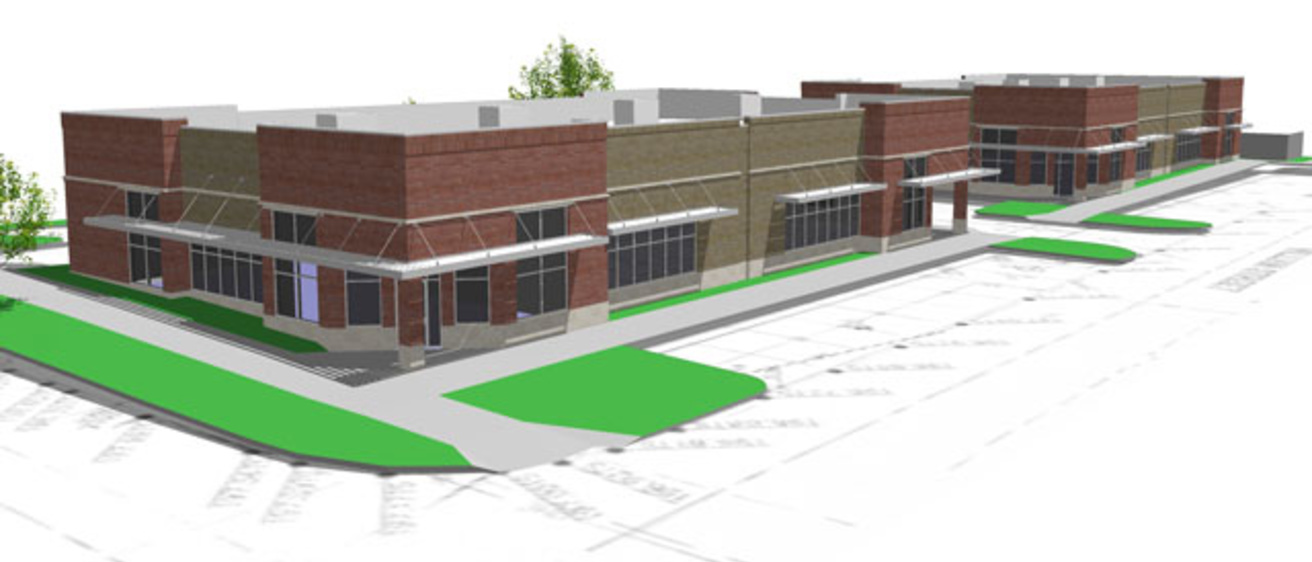An analysis by a group of University of Iowa business students suggests that Iowa City focus its efforts to redevelop the Towncrest neighborhood on a piece of city-owned vacant land at the corner of First Avenue and Muscatine Road.
That land, they suggest, could be the site of a keystone project for the neighborhood’s redevelopment in the same way that Cedar Rapids used flood-damaged land to bring the New Bohemia neighborhood back to life.

The study was completed by 15 students in an advanced real estate class this spring semester taught by John Gallo, a member of the finance faculty in the Tippie College of Business. It was commissioned by the Iowa City Planning and Community Development Department and presented at City Hall the afternoon of Tuesday, May 14.
The students spent the semester studying and analyzing the neighborhood to determine the commercial market needs, the appropriate financial assistance needed to encourage development, and the potential uses for the parcel at the southwest corner of First Avenue and Muscatine Avenue, Gallo says. Over the course of the project, they met with a number of developers, people from the local lending community, appraisers, city staff, and others to determine the best use for the corner lot.
Developed in the 1950s, Towncrest thrived for many years until a lack of public infrastructure improvements led to a decline that forced the city to declare the neighborhood a blighted area in 2009. The following year, the city approved an Urban Renewal Plan that provided an array of public financing options for developers in an attempt to revive the neighborhood, with the aim of diversifying its mix of office, retail, and residential space, expand its property tax values, and increase consumer traffic flow.
But the students found that the plan’s implementation has been piecemeal and needs more focus. In particular, the students found that the plan lacks centralized coordination, with no one person overseeing and directing the process.
“In the absence of a managed approach, Towncrest redevelopment will not produce the stated diversity objectives of the plan,” the students write in their report.
The students believe Iowa City could develop a model that the City of Cedar Rapids used in the last five years to successfully redevelop the New Bohemia neighborhood. The report points out that while the city targeted New Bohemia for redevelopment for years, there was no lead developer and little cooperation among property owners, so the plan made only marginal progress.
However, after the flood of 2008 devastated the neighborhood, the city acquired a flood-damaged piece of land and used that to centralize redevelopment planning. Since then, with public-private partnerships leading the way and an improved financial commitment from the city, New Bohemia’s redevelopment has shown strong signs of progress.
The students’ analysis suggests that the 49,000-square-foot block of city-owned vacant land at First Avenue and Muscatine Road could be used as a catalyst for Towncrest redevelopment in the same way Cedar Rapids used flood damaged land to jumpstart New Bohemia. They believe earmarking $2 to $5 million in public incentives will entice a developer to build a keystone project at that corner that begins to diversify the area and increases consumer traffic.
“I was impressed by the enthusiasm and knowledge of the students, and I enjoyed working with the students throughout the semester,” says Steve Long, community development director of the City of Iowa City. “The end product is something that we can use as a blueprint for the future redevelopment of the Towncrest neighborhood.”
